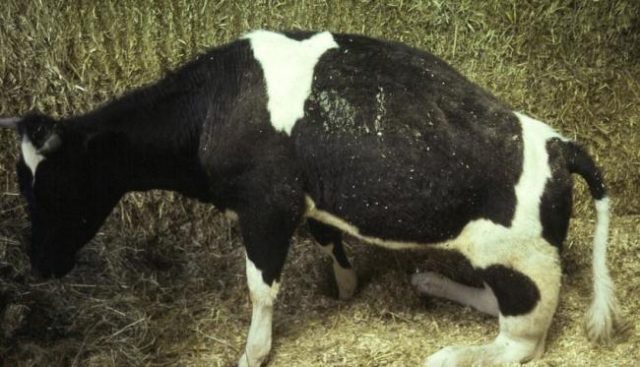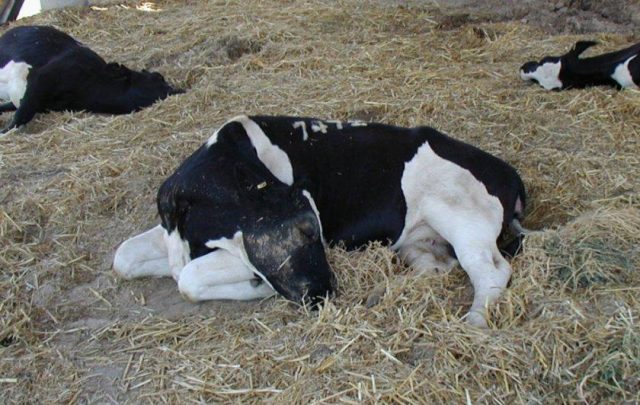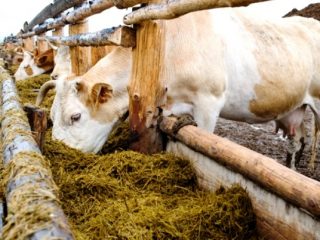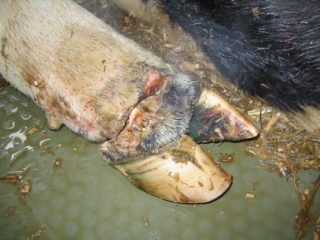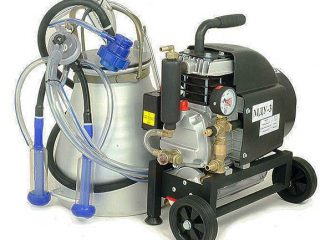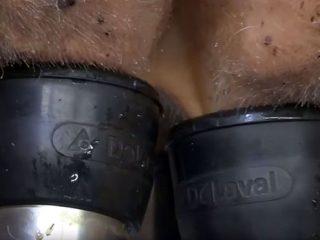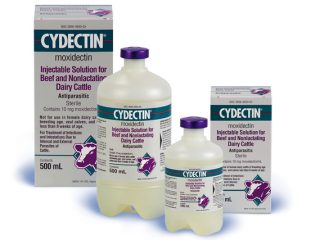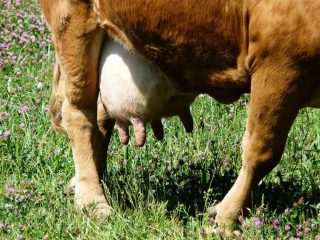Colic in calf and cattle is a fairly common intestinal disorder, which is a complex symptomatic complex that arises and manifests itself in diseases of the digestive system. In ordinary life, colic is most often called simply "bloating", and breeders of animals in the usual course of the disease independently diagnose and treat them.
Varieties of colic
The appearance of colic, both in a young and an adult animal, is always evidence that a malfunction has occurred in the body of an individual in the work of any part of the gastrointestinal tract.
In veterinary medicine, it is customary to distinguish 2 main types of colic, depending on which organs are sick in a calf or an adult:
- True colic - occur in case of disturbances in the work of the stomach or intestines. Examples of diseases in this case are: acute expansion of the stomach, flatulence, intestinal congestion;
- False colic - manifest themselves in diseases of the liver, kidneys, bladder, as well as in connection with an infectious disease of the animal.
In addition to the two listed, veterinarians and zoologists also distinguish a third type of colic - symptomatic. This type of gastrointestinal disorder can occur as a result of surgical, obstetric influence on the calf, or as a result of the presence of any infectious or helminthic disease.
The most common classification is the division of colic, depending on in which area of the body the symptoms of the disease appear:
- Gastric.
- Intestinal.
Intestinal cramps, in turn, include
- bloating without peritonitis (eg, flatulence, chymostasis);
- bloating with manifestation of peritonitis (eg, thromboembolism).
Causes of occurrence
In veterinary medicine, it is customary to distinguish 3 main reasons why colic can occur in calves and cattle:
- For young animals, this is, most often, a too abrupt transition or lack of a preparatory stage for the transition from dairy feeding to a normal diet. The calf can also be poisoned by giving it sour milk along with its mother's milk.
- Food poisoning.
- The presence of malfunctions in the gastrointestinal tract or the whole organism as a whole in a young or adult cattle.
Food poisoning in cattle can occur due to non-compliance with the basic rules of animal nutrition:
- diet and watering regime (for example, drinking plenty of fluids after a heavy meal);
- supplying easily fermenting food to the animal immediately before or after an intense walk (eg oats, barley);
- the use of poor quality feed in feeding livestock, as well as very cold, frozen feed or rotten, sour, moldy or littered with earth and sand;
- independent eating by animals of poisonous plant species in the pasture.
Disruptions in the work of the gastrointestinal tract of cattle can be caused by:
- severe overheating or hypothermia of the animal's body (this is especially typical for calves);
- foreign objects that have entered the gastrointestinal tract and interfere with its normal functioning;
- the presence in the body of a calf or an adult of parasitic creatures.
Symptoms
Experienced veterinarians, zoologists and farmers talk about about 40 different types of diseases, one of the main symptoms of which is colic.In both a calf and an adult, the presence of discomfort in the gastrointestinal region can be diagnosed by the following signs:
- agitated and restless animal behavior;
- constant stepping and fiddling with limbs;
- a calf or an adult constantly looks back at its belly and constantly fanns itself with its tail;
- the animal hits itself with its hind legs in the stomach;
- individuals of cattle assume uncharacteristic postures for them, for example, trying to sit like a dog, or swing their body from side to side. At the same time, the young calf constantly tries to lie on its stomach. This situation should not be admitted categorically, since its body weight will put pressure on the gastrointestinal tract, and this, in turn, can further worsen the calf's condition due to the uneven distribution of pressure;
- the animal refuses the food and water offered to him;
- the appearance of a calf or an adult in the abdomen changes, its volume increases sharply;
- the process of defecation occurs with great straining.
The signs described above are the primary symptoms of colic in the calf and cattle. Secondary symptoms include the following:
- malfunction of the cardiovascular system;
- violation of the respiratory rate of the animal;
- improper functioning of the urinary system (too frequent urination or, conversely, almost complete absence of it).
Therapies
When diagnosing the presence of colic in an animal, he needs to help and relieve pain as soon as possible, since bloating causes severe discomfort to the individual. The method of treating colic calves and cattle includes several main stages:
- Initially, it is required to free the stomach and intestines of the animal from the food accumulated in it.
- The animal should be drunk with sunflower or olive oil, mineral or slimy broth (such remedies are used in folk medicine and are considered quite effective as first aid to a sick individual).
- It is necessary to eliminate the spasm and pain of the calf (for this, drugs such as No-shpa, Novalgin are used), also in order to relieve pain, the animal should be given sleeping pills and pain relievers (Bromide, Novocain, analgesics).
- Mild colic and bloating in very young calves are treated with chamomile infusion.
- To restore the normal functioning of the gastric and intestinal tract of a sick individual, a special massage of the abdomen and rubbing should be done.
After the colic recedes, it is necessary to restore the body to normal operation. You should not immediately give food to a previously sick individual. This should be done gradually, starting the feeding process with very limited quantities of boiled root vegetables and hay.
Prophylaxis
To avoid the appearance of such an unpleasant phenomenon as colic in cattle, you should adhere to several basic rules in feeding and keeping animals:
- for calves, the main rule is compliance with a soft, gradual transition from a dairy type of diet to an adult type of diet;
- feed the animals only with proven and high-quality food, observe the food intake regimen for each individual: the main rule should be the alternation of lighter and heavier foods;
- avoid strong fluctuations in the ambient temperature for animals (hypothermia or overheating of individuals), especially for calves. In the pen where the individuals are kept, it is necessary to try to maintain a constant ambient temperature;
- for drinking in cattle, only clean water should be used, preferably at room temperature;
- compulsory walks in the fresh air at any time of the year: this event is certainly suitable for prevention: both diseases of the gastrointestinal tract and the whole organism as a whole.
Conclusion
Colic in a calf and cattle is a phenomenon that directly indicates the presence of malfunctions in the gastrointestinal tract of the animal's body. Experienced farmers and breeders have long learned how to independently diagnose the appearance of this unpleasant disease in animals and take all the necessary measures to help them. It is important to understand that colic is a symptom of a large number of diseases, and in order to avoid their appearance in calves and cattle, it is necessary to carefully monitor the regimen and quality of their nutrition, the living conditions of animals and their state of health in general.
